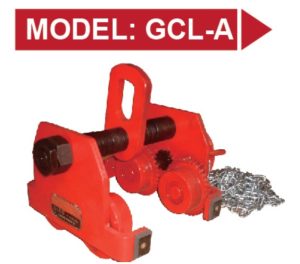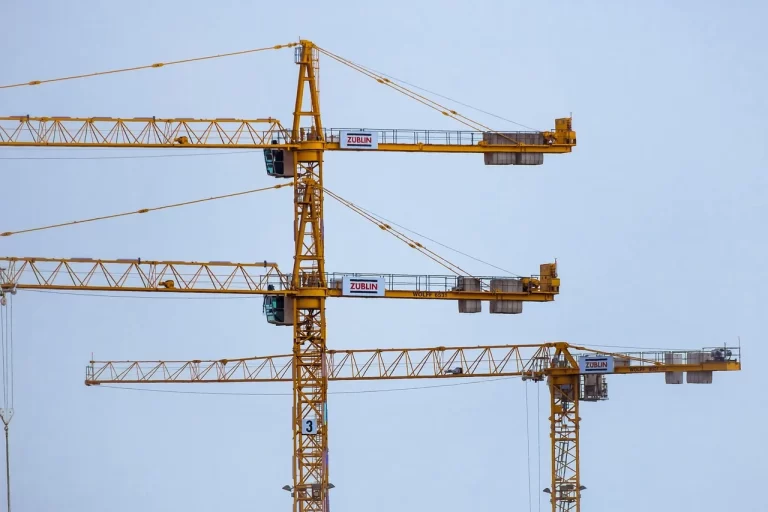Introduction
In industrial and mechanical applications where heavy loads need to be lifted, moved, or positioned with precision and safety, a geared trolley plays a crucial role. Unlike a simple push trolley, a geared trolley provides enhanced control over movement, especially in horizontal directions, by incorporating a gear mechanism and hand chain operation. These devices are often seen working in conjunction with hoists and cranes in environments such as factories, warehouses, shipyards, and construction sites.
This article provides an in-depth overview of the structure and usage of geared trolleys, exploring their components, working principles, advantages, and practical applications.
What Is a Geared Trolley?
A geared trolley is a mechanical assembly designed to traverse a beam (typically an I-beam or H-beam) and support lifting equipment such as a hoist. The movement of the trolley is controlled by a hand chain connected to a gear system, allowing precise lateral movement of the load along the beam.
Unlike a push or manual trolley that relies on physical force to move, a geared trolley enables the user to move the load more easily and with greater control, especially under heavier load conditions.
Basic Structure of a Geared Trolley
 1. Trolley Wheels
1. Trolley Wheels
- Function: These allow the trolley to roll along the bottom flange of an I-beam.
- Material: Usually made of hardened steel for durability and to handle heavy loads.
- Design: Precision-machined to ensure smooth operation and minimal resistance.
2. Side Plates
- These are the frame elements that hold the entire trolley together.
- Typically constructed from high-strength steel.
- The side plates support the wheels and help to maintain alignment with the beam.
3. Gear System
- Located within the trolley body.
- Comprises a series of gears (usually spur gears) that multiply the user’s input force.
- Connected to the hand chain mechanism.
4. Hand Chain Wheel
- A wheel with notches or sprockets where the hand chain sits.
- When the operator pulls the hand chain, it rotates the hand chain wheel, which engages the gear system.
5. Hand Chain
- A continuous loop of chain hanging from the trolley.
- Used by the operator to manually drive the trolley along the beam.
- Allows for operation from ground level, which is especially important for elevated beams.
6. Suspension Hook or Plate
- Located at the base of the trolley, this is where the hoist or load hook is attached.
- Must be robust and capable of withstanding dynamic loads.
7. Spacer Washers / Adjusting Collars
- These components help to fit the trolley to different beam widths.
- Essential for beam compatibility and safety.
8. Bearings and Axles
- Ensure smooth operation and reduce friction between moving parts.
- Usually sealed to protect against dust and debris.
Working Principle
The geared trolley operates on a simple mechanical principle: the conversion of manual pulling force into rotational motion through a gear system.
- The operator pulls the hand chain, which loops around the hand chain wheel.
- This action turns the gear mechanism.
- The gear system then rotates the trolley wheels.
- The trolley, along with any attached load or hoist, moves along the beam.
The mechanical advantage provided by the gear system means that even heavy loads can be moved with relatively low physical effort. It also allows for precise positioning of the load, which is vital in many industrial applications.
Types of Geared Trolleys
Geared trolleys may be classified based on various parameters:
1. Capacity
- Ranges from light-duty (0.5 ton) to heavy-duty (20+ tons).
- Trolley selection must match or exceed the capacity of the hoist and intended load.
2. Beam Compatibility
- Some trolleys are adjustable to fit different beam flange widths.
- Others are custom-fitted to specific beam profiles.
3. Material
- Standard steel for general applications.
- Stainless steel or galvanized for corrosive environments like food processing or outdoors.
4. Explosion-Proof Versions
- For use in hazardous or flammable environments.
- Made with non-sparking materials and components.
Advantages of Geared Trolleys
1. Precision Control
- Allows smooth and controlled lateral movement of the load.
- Ideal for positioning heavy machinery or components accurately.
2. Increased Safety
- Reduces the risk of load swinging or accidental movement.
- Gear system ensures that the load doesn’t run away on a sloped beam.
3. Reduced Physical Effort
- Gearing provides mechanical advantage, allowing heavier loads to be moved with ease.
4. Durability
- Designed for heavy-duty, long-term industrial use.
- Low maintenance with proper usage.
5. Versatility
- Can be used in various industries and with different types of hoists.
- Adjustable designs allow for multi-beam compatibility.
Applications of Geared Trolleys
Geared trolleys are essential tools in several sectors where precise load handling is required:
1. Manufacturing and Assembly Plants
- Moving parts along production lines.
- Positioning heavy components in machinery assembly.
2. Warehousing and Logistics
- Handling large packages or palletized goods.
- Supporting hoists in loading/unloading bays.
3. Construction Sites
- Lifting and placing beams, blocks, and other building materials.
- Used with scaffolding or overhead girders.
4. Shipbuilding and Shipyards
- Moving marine engines or structural components.
- Especially important in confined, overhead beam spaces.
5. Power Plants and Refineries
- Handling turbines, generators, and other heavy equipment.
- Often require explosion-proof versions in hazardous zones.
Installation and Usage Guidelines
Proper installation and usage are critical for safety and operational efficiency.
Installation Steps
- Beam Inspection: Ensure the beam is rated for the expected load and is free from deformities.
- Width Adjustment: Adjust the trolley to fit the beam flange width using spacers or collars.
- Mounting the Trolley: Place the trolley on the beam carefully, making sure it is level and securely aligned.
- Load Attachment: Securely attach the hoist or load hook to the suspension point.
- Test Run: Perform a test lift and movement to ensure smooth operation and that the trolley does not derail.
Operating Guidelines
- Pull the hand chain gently and steadily.
- Avoid jerky movements that can swing the load.
- Do not exceed the rated capacity.
- Keep clear of the load path.
- Periodically inspect for wear or damage.
Maintenance Requirements
Routine maintenance ensures a long operational life and safe usage.
Regular Checks Should Include:
- Lubrication: Keep bearings and gears lubricated to avoid wear.
- Chain Inspection: Check for stretching, rust, or damage.
- Gear Wear: Inspect for wear on gear teeth.
- Wheel Condition: Ensure no flat spots or cracks.
- Fasteners: Tighten loose bolts and nuts.
Annual Inspections
In high-usage environments, a comprehensive annual inspection by a certified technician is recommended. This should include a load test to verify safe operational limits.
Common Issues and Troubleshooting
1. Trolley Not Moving Smoothly
- Cause: Dirty beam, lack of lubrication, or damaged wheels.
- Solution: Clean beam, lubricate parts, replace worn components.
2. Chain Sticking or Skipping
- Cause: Debris in the chain wheel or worn chain.
- Solution: Clean and inspect chain; replace if worn.
3. Load Not Moving Evenly
- Cause: Misalignment or uneven loading.
- Solution: Rebalance load, check alignment on beam.
4. Unusual Noises During Operation
- Cause: Gear damage or bearing failure.
- Solution: Inspect internal mechanisms; replace faulty parts.
Safety Standards and Certifications
Geared trolleys used in industrial applications must adhere to safety regulations and quality standards such as:
- ASME B30.17 – For overhead and gantry cranes.
- ISO 9001 – Quality management systems.
- CE Marking – For equipment used in European markets.
- ATEX Certification – For explosion-proof models used in hazardous environments.
Always check the manufacturer’s specifications and compliance documentation before purchase or use.
Conclusion
A geared trolley is a vital tool for any environment that requires controlled, safe, and efficient horizontal movement of heavy loads along a beam. Its geared mechanism, combined with a user-friendly hand chain operation, offers superior control and safety over basic trolleys. Whether it’s in a manufacturing plant, warehouse, shipyard, or construction site, the geared trolley ensures loads are moved with precision and minimal effort.
By understanding its structure, applications, and maintenance needs, users can maximize both the productivity and lifespan of this essential piece of industrial equipment.


